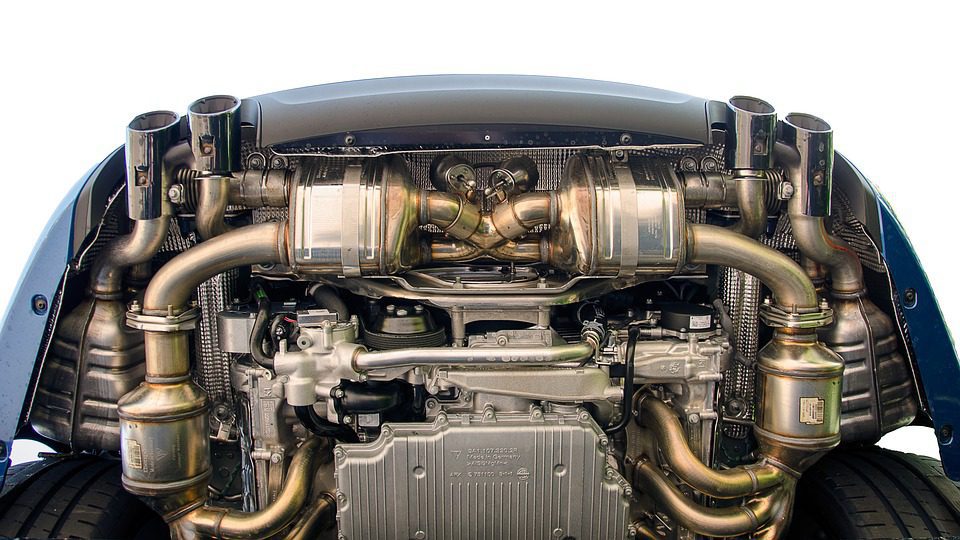Opel Corsa Engine: Whatever You Required to Know Prior To Purchasing
Opel Corsa Engine: Whatever You Required to Know Prior To Purchasing
Blog Article
Exploring the Inner Functions of a Compact Lorry's Engine System
As motorists, we frequently take for granted the detailed processes that happen within the confines of our automobile's engine system. The portable yet intricate machinery that moves us ahead is a wonder of engineering precision and sychronisation. From the regulated surges in the combustion chamber to the precise timing of gas shot, every element plays a crucial function in the smooth procedure of the engine. In this exploration of a small lorry's engine system, we will decipher the inner functions of this mechanical symphony, clarifying the enigmas that drive us ahead on our day-to-day journeys.
Burning Process Summary
The burning process in a portable lorry's engine system is a vital mechanism that successfully converts gas into power to power the vehicle. This process takes place within the burning chamber of the engine, where gas and air mix, fire up, and generate controlled explosions. The burning process contains 4 primary phases: intake, power, compression, and exhaust.
During the consumption stage, the piston moves downward, attracting in a combination of air and fuel right into the burning chamber. This downward movement creates the power needed to drive the automobile. This cyclic burning procedure is essential to the operation of a portable automobile's engine system, ensuring reliable energy conversion for propulsion.
Piston and Cyndrical Tube Communication

The piston's exact fit within the cylinder is vital for preserving optimum compression and preventing energy loss throughout combustion. Tight clearances between the piston and cylinder walls guarantee effective sealing, enabling the piston to move smoothly without allowing gases to leakage past. Correct lubrication is also vital to minimize friction and wear between these elements, boosting durability and efficiency.
Additionally, the layout and materials utilized in producing the piston and cylinder impact engine efficiency and sturdiness. Modern engines commonly use light-weight yet resilient materials like aluminum alloys for pistons and cylinder linings to reduce inertia and enhance thermal effectiveness. Overall, the unified communication between the piston and cyndrical tube is fundamental to the engine's performance and total performance.
Fuel Injection System Performance
Gas injection systems in compact automobile engines play a vital duty in exactly providing gas to the burning chamber for effective and regulated ignition. The fuel shot system works by infusing fuel right into the combustion chamber at the ideal moment throughout the engine's operation (opel corsa engine). This precise timing makes certain that the fuel blends uniformly with the air for correct burning, leading to improved fuel efficiency and decreased discharges
There are largely 2 kinds of gas injection systems utilized in portable car engines: port gas shot (PFI) and direct gas shot (DFI) PFI systems infuse gas into the consumption port before the consumption valve, while DFI systems infuse fuel directly right into the combustion chamber. Both systems have their advantages, with DFI using better gas atomization and PFI supplying a much more economical solution.
Comprehending Engine Cooling Systems
Efficient operation of a portable lorry's engine relies greatly on the efficiency of its cooling mechanisms. The air conditioning system in address a compact car usually is composed of a number of parts functioning together to manage the engine temperature level. Understanding these engine air conditioning systems is essential for maintaining the efficiency and durability of a portable lorry's engine system.

Exhaust System Parts Explained
The optimal performance of a small lorry's engine air conditioning devices depends upon a complementary system referred to as the exhaust system, which makes up various necessary elements for guaranteeing reliable emissions and engine performance. The exhaust system includes parts such as the exhaust manifold, catalytic converter, muffler, and tailpipe. The exhaust manifold collects exhaust gases from the engine's cyndrical tubes and paths them to the catalytic converter. The catalytic converter after that converts damaging contaminants in the exhaust right into much less hazardous discharges before launching them with the muffler and tailpipe.
One vital part of the exhaust system is the oxygen sensing unit, which keeps an eye on the oxygen levels in the exhaust gases to assist control fuel intake and ensure optimal engine efficiency. opel corsa engine. Furthermore, the resonator may exist in some exhaust systems to Source reduce noise degrees. Generally, the exhaust system plays a vital function in maintaining engine performance, lowering harmful discharges, and guaranteeing a quieter driving experience for small car proprietors

Verdict
Finally, the portable car's engine system is a complex mix of components that work together to assist in the burning process, transform gas right into energy, and get rid of waste gases. Understanding the internal workings of the engine system, including the piston and cylinder communication, fuel shot system, engine air conditioning devices, and exhaust system components, is vital for keeping optimum performance and effectiveness of the vehicle.
The combustion process in a small vehicle's engine system is a critical device that effectively converts fuel right into power to power the lorry.Fuel shot systems in small vehicle engines play a vital function in specifically delivering fuel to the burning chamber for controlled and reliable ignition.There are largely 2 types of fuel shot systems used in portable automobile engines: port fuel injection (PFI) and straight gas injection (DFI) Recognizing these engine air conditioning devices is vital for keeping the efficiency and longevity of a small car's engine system.
The optimum functioning of a compact automobile's engine cooling devices depends on a corresponding system understood as the exhaust system, which consists of numerous vital elements imp source for guaranteeing effective emissions and engine efficiency.
Report this page